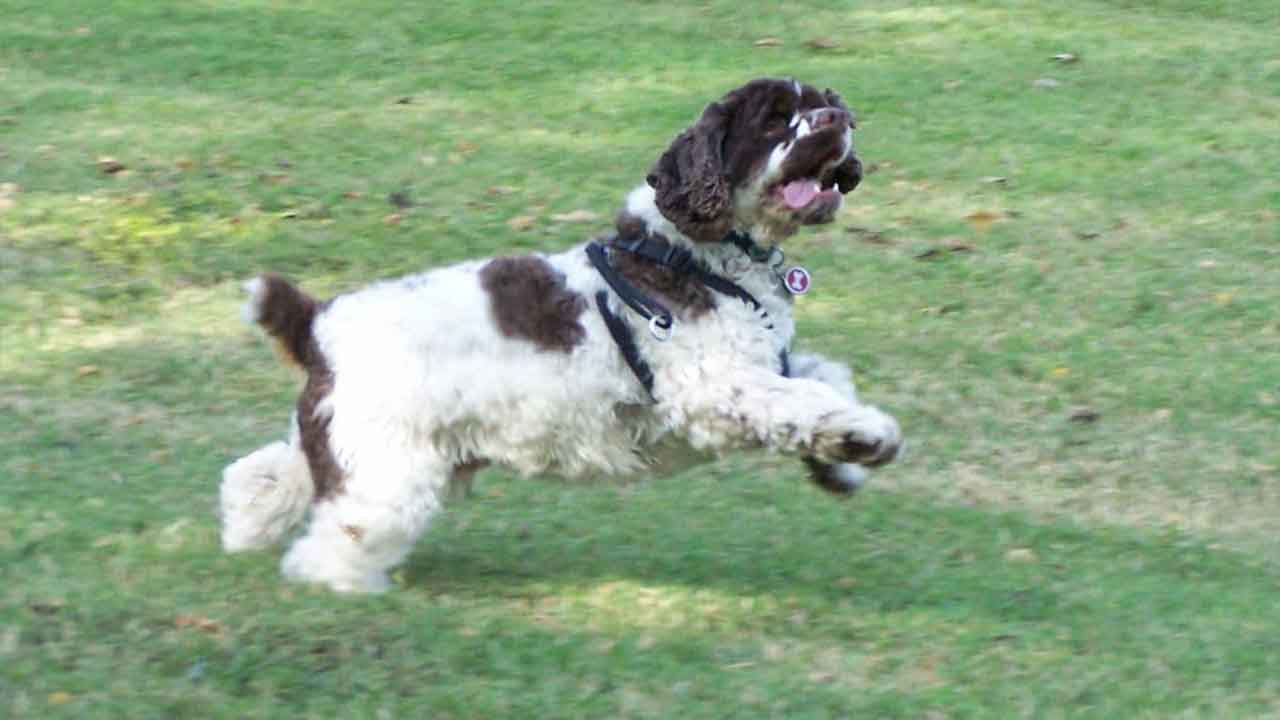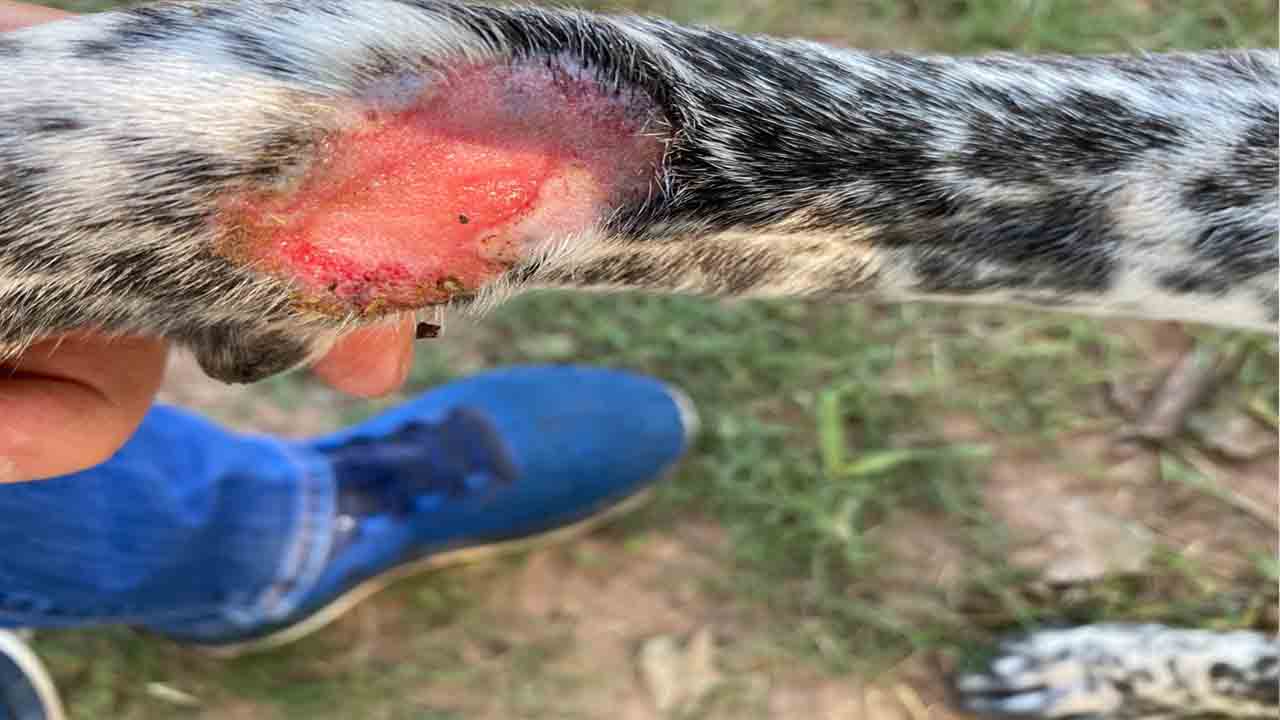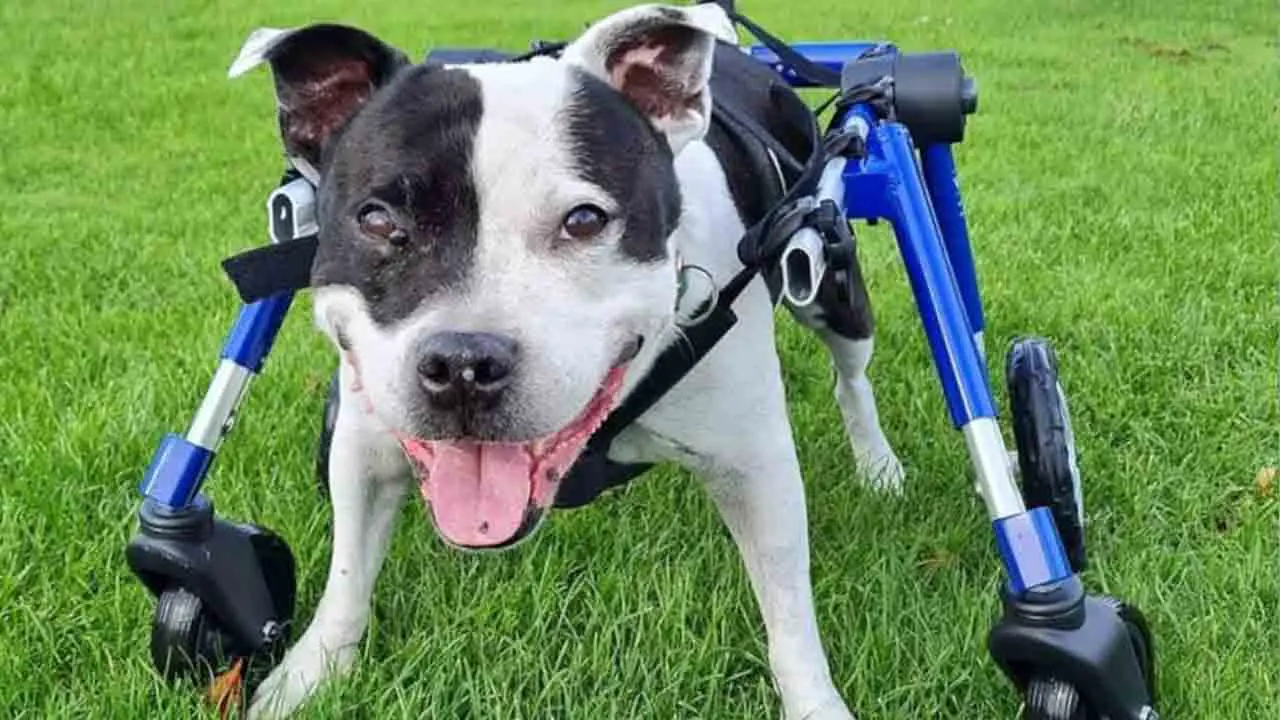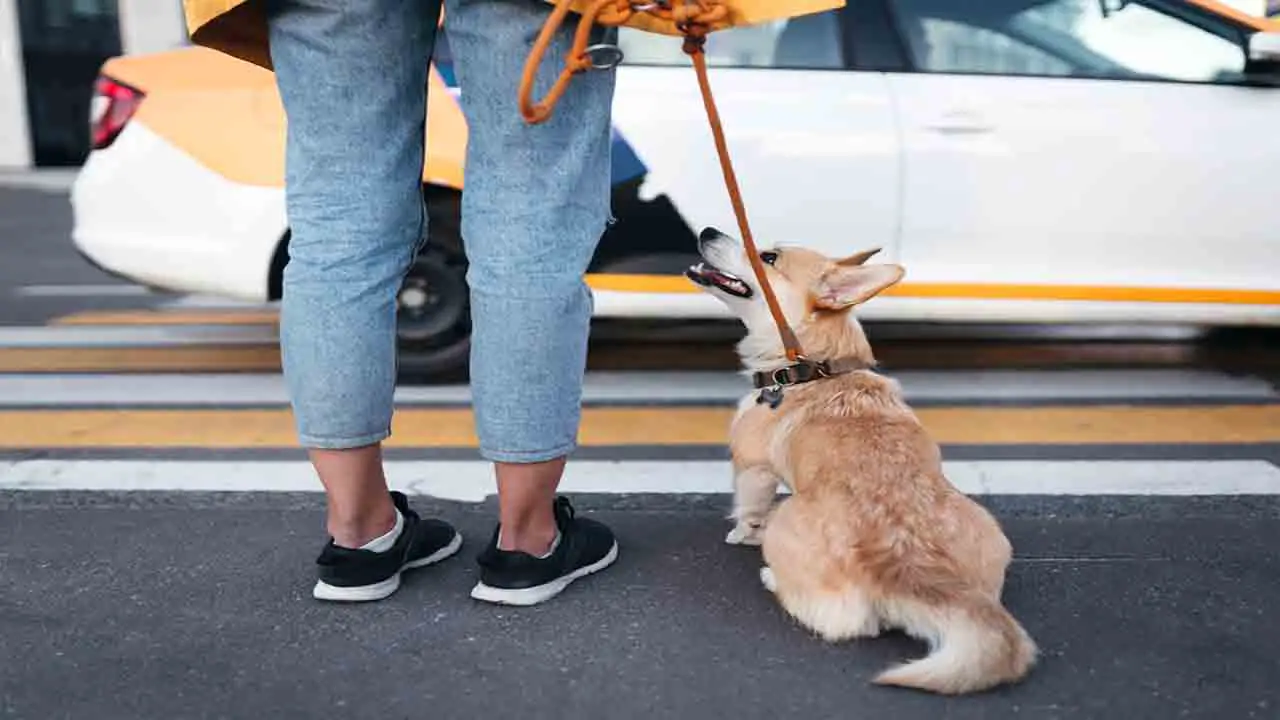Dogs are known for their playful and energetic nature, often bringing joy and companionship to their owners. However, as much as we love our furry friends, it is important to understand that they can also be prone to accidents and injuries. One common issue many dog owners may encounter is their pet tripping over their front paws while walking or running. This seemingly harmless occurrence can have serious consequences if left unaddressed.
Responsible pet owners must know the causes and potential dangers of dogs tripping over their front paws. Here, we will delve into the reasons dog tripping over front paws behind this behavior, the potential risks it poses for our canine companions, and most importantly, how to prevent and handle such incidents. Additionally, we will discuss treating dog paw knuckling, creating a safe environment, seeking veterinary hospital attention, and preventive measures to reduce the risk of tripping in dogs.

Why Dog Tripping Over Front Paws? 5 Main Causes

When a dog starts tripping over their front paws, it can be concerning for pet owners. There are several potential causes for this behavior, and understanding them can help address the issue. If your dog is consistently tripping over their front paws. It is best to consult a veterinarian for a proper diagnosis and appropriate treatment plan. Here are five possible reasons why a dog may be tripping over their front paws:
1. Muscle Weakness Or Atrophy
When a dog trips over their front paws, it could indicate muscle weakness or atrophy. This can occur for various reasons, such as aging, neurological conditions, or musculoskeletal disorders. Muscle weakness can affect the dog’s ability to coordinate their movements properly, causing them to stumble or trip.
It is important to consult with a veterinarian if you notice your dog experiencing frequent tripping or difficulty walking. They can thoroughly examine the issue and determine its underlying cause. Treatment options may include physical rehabilitation therapy, medication, or other interventions depending on the specific condition affecting the dog’s muscles.
2. Neurological Conditions

There can be several reasons why a dog may trip over their front paws, and one of them could be related to neurological conditions. Neurological conditions can affect a dog’s coordination and balance, leading to difficulties in walking or running. Conditions such as degenerative myelopathy, which affects the spinal cord, or cerebellar hypoplasia, which affects brain development, can cause dogs to stumble or trip over their front paws.
If you notice your dog experiencing frequent tripping or difficulty with mobility, it is important to consult a veterinarian who can perform a thorough examination and provide an accurate diagnosis. They may recommend treatments or therapies to help manage the condition and improve your dog’s quality of life.
3. Arthritis Or Joint Problems
When a dog trips over their front paws, it could be a sign of arthritis or joint problems. Arthritis is a common condition in older dogs and can cause stiffness and joint pain relief, making it difficult for them to move properly. Joint problems, such as luxating patella or hip dysplasia, can also affect a dog’s gait and lead to trips or falls. If you notice your dog frequently tripping over their front paws.
It is important to consult with your veterinarian to determine the underlying cause and discuss appropriate treatment options. They may recommend medication, physical therapy, or other interventions to help alleviate your dog’s discomfort and improve mobility.
4. Nerve Damage

Nerve damage can commonly cause dogs to tripping over their front paws. When the nerves that control the movement and coordination of the front legs are damaged, it can result in a loss of balance and difficulty placing the paws correctly. This can lead to the dog stumbling or tripping over their own feet. Nerve damage can occur due to various reasons, including injuries, degenerative conditions, or underlying health issues.
If you notice your dog consistently tripping over their front paws, it is important to consult with a veterinarian who can properly diagnose the cause and recommend appropriate treatment options to help improve your furry friend’s mobility and quality of life.
5. Injuries Or Trauma
There can be several reasons why a dog may trip over their front paws, and one common cause is injuries or trauma. If a dog has suffered an injury to their front legs or paws, it can affect their balance and coordination, leading to trips and falls. This could include sprains, strains, fractures, or other types of trauma.
It is important to consult with a veterinarian if you notice your dog consistently tripping over their front paws. As they can diagnose the underlying cause and provide appropriate treatment. In some cases, physical therapy or rehabilitation exercises may be recommended to help improve the dog’s strength and coordination.
Older Dogs Have The Highest Mobility And The Tendency To Tripping

Older dogs have the highest mobility and the tendency to trip. Most dog owners ought to be conscious of this well-known truth. It results from not being as agile with months of age and older vision, causing unsafe conditions. Older dogs need to be watched more closely in unfamiliar surroundings such as new homes, yards, or off-leash parks where they run into plants, tree roots, or other hazards that can cause them injuries such as hip dysplasia, arthritis, or torn ligaments.
Most of the damage is done by dogs who have not learned to be careful. Training tools are always important in how you train your pet and how they react outside their home. A dog’s likelihood of suffering harm due to negligence increases with age.
Bone Rapid growth and arthritis can lead to hip dysplasia, where bones become weakened or misaligned, which can cause soreness, lameness, and pain medications in joints. The older an adult dog is, the more likely they will have this condition. While dogs generally do not experience osteoarthritis, the same risks of injury can still occur.
Treat Dog Paw Knuckling, Feet Scraping, And Knuckling Of Paws
If your dog is tripping over its front paws and showing signs of paw knuckling, feet scraping, or knuckling of paws, it’s important to address these issues to prevent further injury. Always consult a professional before implementing any treatment plan for your dog. Here are some ways to treat and manage these symptoms:
- Consult With A Veterinarian: It’s crucial to have your dog examined by a veterinarian to determine the underlying cause of the paw knuckling and tripping. They can provide a proper diagnosis and recommend appropriate treatment options.
- Physical Therapy And Rehabilitation: Physical therapy exercises can help improve your dog’s coordination, strength, and balance. This may include exercises such as balance boards, obstacle courses, or specific stretches.
- Assistive Devices: Depending on the severity of the condition, your veterinarian may suggest using assistive devices such as booties or braces to support your dog’s front paws and prevent tripping.
- Medications Or Supplements: In some cases, medications or supplements may be prescribed to address any inflammation or pain management associated with the condition.
- Environmental Modifications: Make adjustments around your home to create a safe and accessible environment for your dog. Remove obstacles that could cause tripping hazards and provide nonslip surfaces on slippery floors.
Tips For Creating A Safe Environment For A Dog With Front Paw Tripping Issues

Creating a safe environment for a dog with front paw tripping issues is essential to prevent accidents and injuries. Remember, it’s important to consult with a veterinarian about your dog’s specific condition and seek their guidance on creating a safe environment tailored to their needs. Here are some tips to help you create a safe space for your furry friend:
- Clear The Clutter: Remove any obstacles or objects your dog could trip over, such as loose rugs, toys, or furniture.
2. Provide Traction: Use non-slip mats or rugs on slippery surfaces to give your dog better traction and stability.
3. Keep Walkways Clear: Ensure your dog’s walking paths are free from any potential hazards, such as cords, wires, or sharp edges.
4. Use Ramps Or Stairs: If your dog has difficulty navigating steps or getting onto furniture, consider using ramps or stairs to provide easier access.
5. Consider Footwear: In some cases, Special foot wax designed booties or socks can provide extra grip and protection for your dog’s paws.
6. Supervise Outdoor Activities: When taking your dog outside, supervise them closely and avoid areas with uneven terrain or obstacles that may increase the risk of tripping.
When To Seek Veterinary Attention For A Tripping Dog

If you notice that your dog is frequently tripping over their front paws, it may be a cause for concern. While occasional trips or stumbles are normal, consistent tripping could indicate an underlying issue. It is recommended to seek veterinary care if your dog’s tripping worsens or is accompanied by other neurological symptoms such as weakness, loss of coordination, or difficulty walking.
A veterinarian will be able to conduct a thorough examination and determine the cause of the tripping, which could range from muscle weakness or nerve damage to more serious conditions like degenerative joint chronic disease or spinal cord degeneration cord problems. Early detection and appropriate treatment can help improve your dog’s quality of life and prevent further complications.
Preventive Measures To Reduce The Risk Of Tripping In Dogs
Tripping over their front paws can be a common sign issue for dogs, especially those with certain breeds or anatomical features. To help reduce the risk of tripping and potential injuries, there are some preventive measures pet owners can take.
- Keep Your Dog’s Nails Trimmed: Long nails can make it more difficult for dogs to walk properly and increase the risk of tripping. Regular nail trims can help prevent this.
- Provide A Clear Walking Path: Remove any obstacles or clutter from your home or yard that could potentially trip up your dog. This includes toys, shoes, and other items that may be in their way.
- Use Non-Slip Surfaces: Consider using rugs or mats with non-slip backing on slippery floors to give your dog better traction and stability while walking.
- Avoid Long Walks On Hot Pavement: Hot pavement can cause discomfort and potentially burn your dog’s normal paw positioning. Opt for walking during cooler times of the day or on grassy areas instead.
- Monitor Your Dog’s Health: Certain medical conditions, such as arthritis or muscle weakness, can contribute to tripping. Regular check-ups with your veterinarian can help identify and manage these issues.
How To Prevent Stumbling While Walking In Dogs

Preventing stumbling while walking dogs is important for their safety and well-being. You can take several steps to help prevent your dog from tripping over their front paws.
First, make sure your dog’s nails are trimmed regularly. Long nails can cause discomfort and make it more difficult for them to walk properly.
Second, provide a clear pathway for your dog by removing any obstacles or clutter from the floor. This will help them navigate their surroundings more easily and reduce the risk of tripping.
Third, consider using a harness or support device to assist your dog while walking. This can provide additional stability and support, especially for middle-aged and older dogs or those with mobility issues.
Lastly, regular strengthening exercises can help improve your dog’s coordination and balance, reducing the likelihood of stumbling while walking. Consulting with a veterinarian or professional trainer can provide additional guidance on exercises appropriate for your dog’s needs. Taking these preventative measures can help keep your furry friend safe and comfortable while they enjoy their walks.
Conclusion
While seeing a dog tripping over their front paws may seem concerning or even humorous, it is important to understand the potential underlying causes and seek proper veterinary care if necessary. With proper intervention and treatment, many dog tripping over front paws overcome these issues and continue to lead happy and healthy lives.
It is also important for pet owners to take precautions, provide a safe environment, and properly train and exercise their dogs to prevent injuries. By being proactive and attentive to our furry companions, we can ensure their well-being and prevent further tripping incidents.
FAQs
[rank_math_rich_snippet id=”s-64710830-b22c-4047-9aa2-d74bd6fb02ae”]